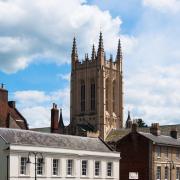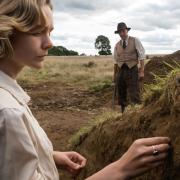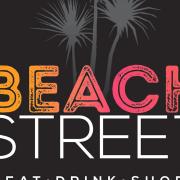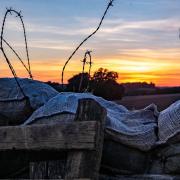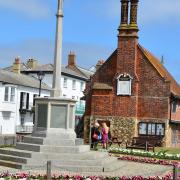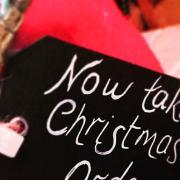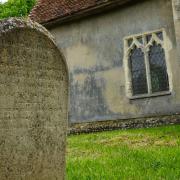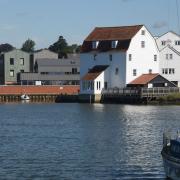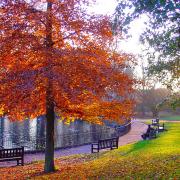Look up in a Suffolk church and chances are there will be winged guardians watching over you. Check out these angels from the county’s churches.

A church roof filled with angels must have been a reassuring sight for people living in the bleak East Anglian countryside 600 years ago. Feathered guardians hovering benevolently over them would surely have been a comforting reminder of the heaven they hoped awaited them.
The 15th century angel roofs of Suffolk are a source of wonder to today’s visitors and among our finest treasures. Absolute masterpieces of carpentry and engineering, they survive largely because the iconoclasts of the Reformation were simply unable to reach them.
Roof angels are the subject of a lavishly-illustrated book by Michael Rimmer and, until the author came along with his powerful photographic lenses and a technique called High Dynamic Range Imaging, they had spent centuries hovering quietly in the darkness, neglected by architects and art historians.

Rimmer’s stunning photographs allow us to see the angels in all their splendour — their expressions, the objects they carry, the robes they wear and the set of their wings. It’s exciting to think that it’s Suffolk, Norfolk and Cambridgeshire where 70% of the country’s angel roofs are to be found – 49 in Suffolk alone.
Rimmer’s fascination with roof angels began when he moved to Norfolk at the start of 2010 and dipped into a Peter Sager guidebook. Seeing pictures of angel roofs, including the magnificent angels in flight at Mildenhall church, he was soon out and about with his tripod.
“It became an obsession because I then decided I would photograph every angel roof in East Anglia,” he says. He also started reading and researching alongside his photography, somehow finding time to develop a remarkable website when he was not working as an investment manager in the City.

Rimmer’s theory of why so many angel roofs occur in East Anglia is new and compelling. Starting with the country’s first known angel roof at Westminster Hall, commissioned by Richard II and built by Hugh Herland, he builds a tantalizing scenario based on Herland’s oversight of the new harbour at Great Yarmouth where he came into contact with wealthy and influential merchants – “exactly the class of people who would subsequently be responsible for commissioning many of East Anglia’s angel roofs”. So, Rimmer deduced, the will, the money and the expertise were all in place in the region for these fantastic projects.
Rimmer unearths some remarkable facts about the expert carpenters and carvers who travelled far and wide in the course of their work. We learn that their ‘summer day’ rates of pay in 1446 would have been 4D with food or 51/2D without, although those working for the King at Westminster Hall got 15s per angel – 30 times the rate for a regular master carpenter.
“You couldn’t put a price on a Royal project,” says Rimmer. “The king just wants it done and these projects are also well documented. The same guy crops up twice and was paid more for the first two angels, so one supposes they were templates for the others.” Hugh Herland had a framing site where the colossal roof parts for Westminster Hall would have been constructed before hauling them to the final site by horse-drawn wagon.

“I’ve no reason to think it didn’t work like this in East Anglia,” says Rimmer. “They had mason’s yards so why not framing yards where they would lay out these huge pieces of timber?” With the long coast and rivers that were navigable into the heart of Suffolk, barge transport would have made perfect sense.
There’s a bit of soul searching before Rimmer comes up with his favourite angel roof in Suffolk. It turns out to be St Mary’s Bury St Edmunds where 11 pairs of colossal and exquisitely carved beam angels support the nave roof. “And we know who paid for it”, says Rimmer, quoting from the will of the benefactor, rich clothier John Barat who died in 1467. ‘All the work of the angels aloft which I had made for a remembrance of me and my friends’.
“The faces of all 22 angels are different and strikingly lifelike, some with squints or double chins,” says Rimmer. “Barat’s own face and the faces of his friends – who included the Abbott of Bury – may well be among them.” Such fun and fascination, and one of so many historical gems in this lovely book.
The Angel Roofs of East Anglia: Unseen Masterpieces of the Middle Ages is published by Lutterworth £19.95.
Like this? Read more:
9 prettiest Suffolk towns and villages
Breakfast in Suffolk - 8 of the best places
Follow Suffolk Life on Facebook for more




